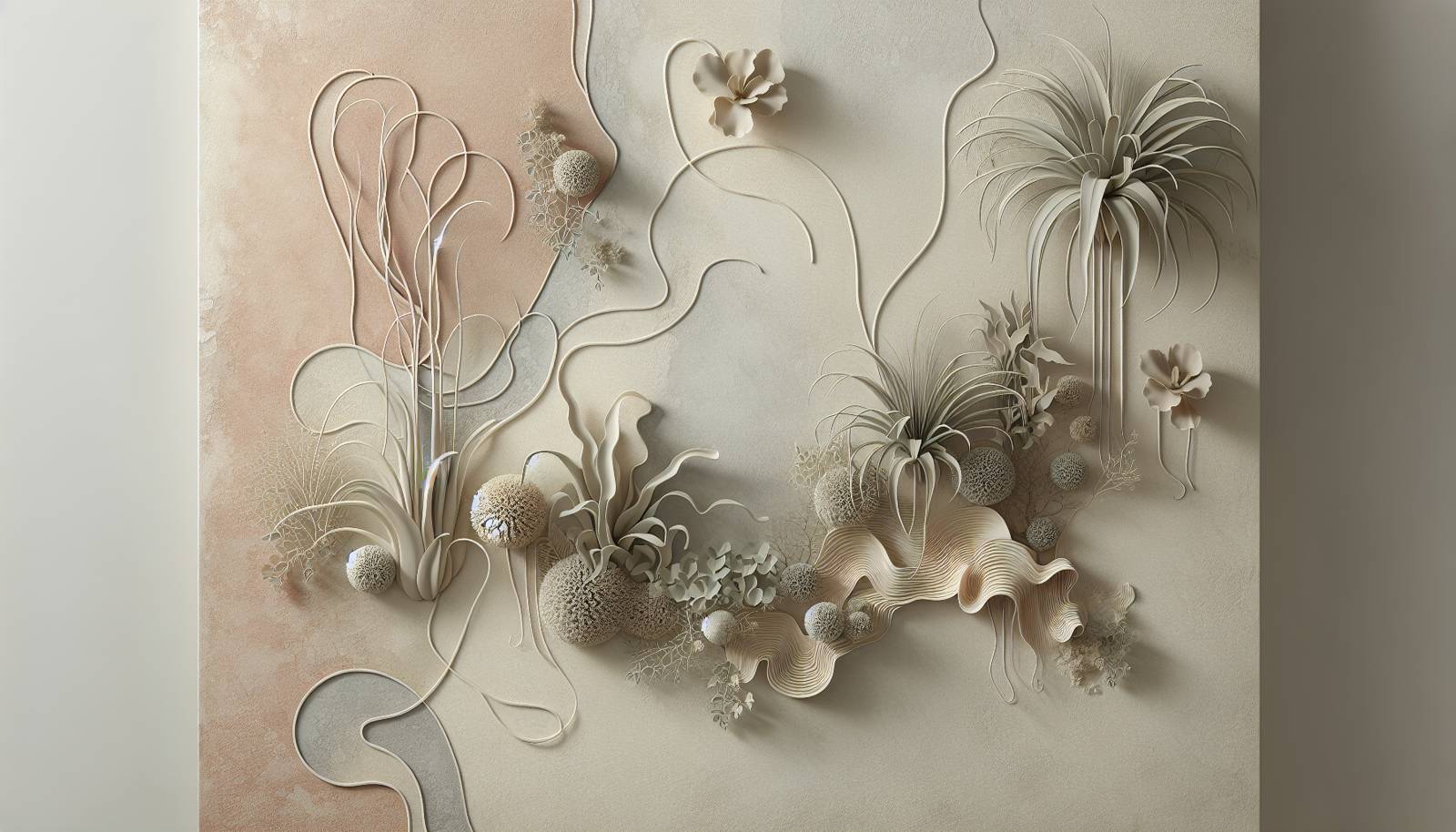
FAQ About Indoor Epiphyte Gardens

What are epiphyte plants?
Epiphyte plants are a type of plant that grows on another plant for physical support but does not harm the host plant. These plants obtain moisture and nutrients from the air, rain, and sometimes from debris accumulating around them. Common indoor epiphytes include orchids, air plants (Tillandsia), and bromeliads.

How do you mount epiphytic plants indoors?
Mounting epiphytic plants involves attaching the plant to a surface such as a piece of wood, cork bark, or a specific mounting board. To do this, position the plant on your chosen surface and secure it with twine, wire, or non-toxic glue until the roots naturally attach. Ensure the mount provides good drainage and air circulation.

What is the best watering technique for indoor epiphytes?
Epiphytes should be watered by thoroughly soaking the plant and its mount, allowing water to infiltrate the roots and the surface it's mounted on. This can be done by submerging or misting. Allow the plant to dry out slightly between waterings to avoid rot, mimicking the natural rain cycles they experience in the wild.

Which lighting conditions are ideal for growing epiphytes indoors?
Most epiphytic plants thrive in bright, indirect light. Direct sunlight can scorch their leaves, so placing them near an east or north-facing window is ideal. If natural light is insufficient, consider using grow lights to provide the necessary lighting conditions.

Can epiphytes be grown without soil indoors?
Yes, epiphytes can be grown without soil as they naturally absorb nutrients and moisture from the air and rain in their native habitats. Indoors, they can be mounted on various surfaces or placed in containers that mimic their natural environment while allowing for good airflow.

What are common types of epiphytic plants suitable for indoor gardening?
Some common indoor epiphytic plants include orchids, air plants (Tillandsia), bromeliads, staghorn ferns, and certain philodendrons. Each of these plants has specific care requirements but generally thrives in similar environmental conditions.

How often should indoor epiphytes be watered?
The frequency of watering depends on factors such as temperature, humidity, and air circulation. In general, most epiphytes should be watered once a week, with more frequent misting or watering during dry or hot periods. Always allow the plant to dry slightly between waterings.

What are the best materials for mounting epiphytic plants?
Popular materials for mounting epiphytic plants include cork bark, driftwood, tree fern mounts, and ceramic mounts. These materials offer good drainage and air circulation, which are essential for the health of epiphytes. Ensure the material is natural and free of chemicals that could harm the plants.

Can epiphytes be fertilized, and if so, how?
Yes, epiphytes can be fertilized, typically during their active growing season. Use a diluted, balanced liquid fertilizer every 4-6 weeks. Alternatively, specialized orchid fertilizers can be used for epiphytic orchids. Always follow the instructions to avoid over-fertilizing.

What temperature range is suitable for indoor epiphytes?
Most indoor epiphytes thrive in temperatures ranging from 60 to 80°F (15 to 27°C). It's crucial to maintain stable temperatures and avoid sudden changes, as many epiphytic species are sensitive to temperature fluctuations.

How do you ensure adequate humidity for indoor epiphytes?
Maintaining humidity levels of around 50-70% is ideal for indoor epiphytes. This can be achieved by regularly misting the plants, using a humidifier, or placing a tray with water and pebbles nearby to increase ambient humidity.

What are the signs of overwatering or underwatering epiphytes?
Signs of overwatering include yellowing leaves, root rot, and a musty smell. Conversely, underwatering is indicated by wilting, browning leaf edges, and dry, shriveled roots. Adjust your watering schedule based on these symptoms to maintain plant health.

Can epiphytic plants be grown in terrariums?
Some epiphytic plants like air plants and small orchids can be successfully grown in terrariums. Ensure the terrarium has proper ventilation to prevent excessive humidity and mold growth, and avoid fully enclosed setups unless there is a method to circulate fresh air regularly.

Do epiphytes need pruning, and how is it done?
Pruning epiphytes is usually limited to removing dead or damaged leaves and flowers to maintain plant health and appearance. Use sterilized scissors or pruners to prevent disease spread. Some epiphytes may also benefit from root trimming if they become overcrowded.

How do you propagate indoor epiphytes?
Propagation methods depend on the type of epiphyte. Many can be propagated by division, where sections of the plant with roots are separated and mounted or potted separately. Air plants can produce pups, small offsets that can be separated and grown on their own when mature.

What challenges might arise when growing epiphytes indoors?
Common challenges include maintaining proper humidity, avoiding root rot from overwatering, ensuring adequate light, and preventing pests such as mites and scale. Regular monitoring and adjustment of growing conditions can help address these issues.

Are indoor epiphyte gardens low maintenance?
Indoor epiphyte gardens can be relatively low maintenance once you've established a suitable environment and routine. They require periodic watering, misting, and occasional fertilizing. However, they may need more attention during seasonal changes when indoor conditions fluctuate.

What are some creative ways to display indoor epiphyte gardens?
Epiphyte gardens can be displayed creatively using wall mounts, vertical gardens, hanging planters, or terrariums. Mounting on driftwood or in decorative frames can add an artistic touch while showcasing the unique growth patterns of these plants.

What are some benefits of growing epiphytes indoors?
Growing epiphytes indoors offers aesthetic appeal with their unique and diverse forms. They also improve indoor air quality by absorbing toxins and releasing oxygen. Additionally, these plants are space-efficient as they don't require soil, making them suitable for a variety of displays.

Can epiphytes be used in vertical gardens?
Yes, epiphytes are excellent candidates for vertical gardens due to their natural growth habits. They can be attached to vertical surfaces using mounts or pockets that allow air circulation and drainage. This setup not only saves space but also creates a striking display of plant diversity.
